15 Companion Plants for Cabbage (With Pictures)
-
Pete Ortiz
- Last updated:
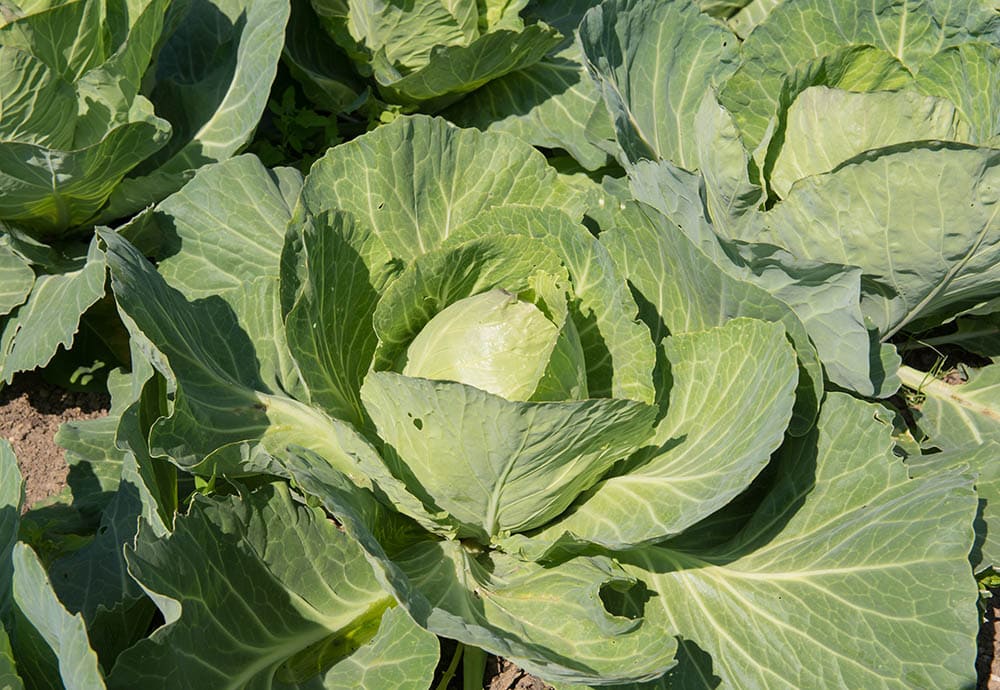
There’s nothing more exciting than watching your cabbages unfold and blossom into maturity! These vegetables are easy to grow and need little maintenance, but they can be susceptible to pests, diseases, and other factors. That’s where companion plants come in.
Companion planting is the art of providing certain plants with conditions to benefit one another. Companion plants include those that repel pests and attract pollinators, making your garden or farm more productive and healthier.
There are innumerable companion plants for all plant species, but have you ever wondered what plants do well with cabbage? This article will give you a comprehensive list of vegetables, legumes, herbs, and flowers that do well with cabbage. We’ll also tell you what to avoid planting near your cabbages. Let’s get started.
The Top 15 Companion Plants for Cabbage
Vegetable Companions
1. Beets

| Soil Type: | Fertile and well-prepared |
| Soil pH: | Between 6.0 and 7.0 |
| Sun Exposure: | 6 hours of direct sunlight every day |
Beets are excellent companions for cabbage, especially in the early stages of growth. They help keep the cabbage roots moist and prevent them from drying out and getting sun-scorched. They also deter pests that feed on the cabbage leaves. The leaves of the beet plant contain chemicals that repel root maggots, which are common cabbage pests.
Beets also give the soil essential nutrients helpful to the growth of cabbages. After harvesting beets, their leaves decompose and make an excellent addition to a compost pile. This compost pile also provides essential nutrients to cabbage.
2. Celery

| Soil Type: | Compost-enriched |
| Soil pH: | Between 5.8 and 6.8 |
| Sun Exposure: | 6–8 hours daily |
Celery is a repellent to pests like aphids, flea beetles, and root maggots. When planted next to cabbages, it will keep them free of these pests and subsequent diseases. Its smell keeps insects, such as the white cabbage butterfly, away from the cabbages while they are still young seedlings.
Celery also attracts ladybugs and lacewing larvae. These are great friends to have in your garden because they eat many other types of garden pests such as aphids and cabbage moths.
In return, cabbages protect young celery from the wind. So, the two plants help each other when growing in the garden.
3. Onions

| Soil Type: | Well-drained with high organic matter |
| Soil pH: | Between 6.0 and 7.0 |
| Sun Exposure: | 8–10 hours per day |
Onions are powerful disease fighters that keep harmful fungi away from cabbage plants. They also release sulfur compounds into the air that repel aphids from attacking your cabbages in the garden.
The scent of onions also keeps away other pests that might go after your cabbage, including cabbage worms, loopers, maggots, and Japanese beetles.
Onions are easy to grow in cold climates and make great additions to any garden. However, don’t plant them close to other onion-related plants, such as shallots, garlic, and leeks. This is due to onion maggots that spread fast from one plant to another. Also, don’t plant onions near beans or peas.
4. Carrots

| Soil Type: | Well-drained and not compacted |
| Soil pH: | Between 6.0 and 7.0 (neutral to slightly acidic) |
| Sun Exposure: | 6–10 hours each day |
Carrots are another vegetable that works well with cabbages and has a similar growing cycle. The carrot roots help loosen up the soil so that water can penetrate it better and provide more nutrients for both plants.
The leaves and roots of these two crops also have similar growth patterns. They don’t compete with each other for sunlight or nutrients.
Carrots will also add nutrients to the soil when their leaves decompose after harvest. Ensure you plant them before transplanting cabbages. This way, they’ll have grown a few inches by the time you transplant the cabbages, so both plants will grow together.
5. Spinach
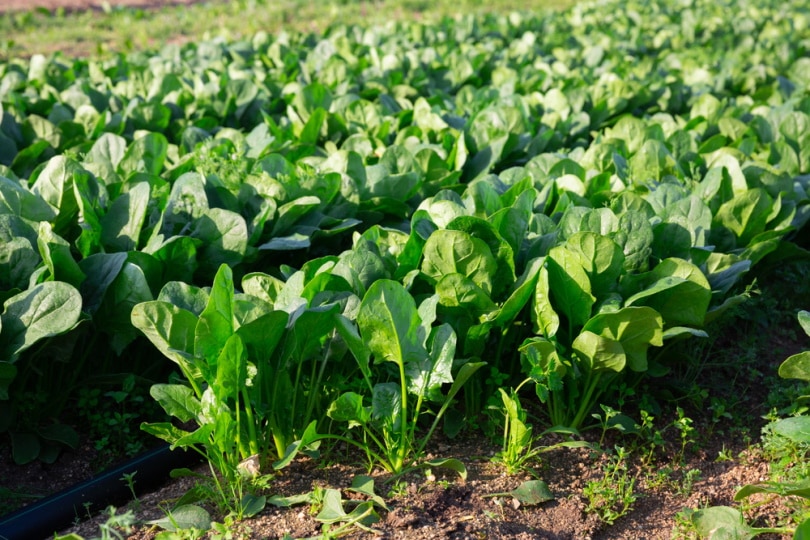
| Soil Type: | Well-drained |
| Soil pH: | Between 6.5 and 8.0 |
| Sun Exposure: | Light shade |
Spinach is a cool-season vegetable that prefers rich soil with excellent drainage. It’s one of the most popular vegetables to grow with cabbage. The two plants will not only help each other out, but they also look pretty together.
It’s best to plant spinach on opposite ends of the garden bed so that neither one’s leaves shade the other’s growth too much. Spinach will also thrive best when grown with other brassica family plants, such as kale, broccoli, and Brussels sprouts.
6. Garlic
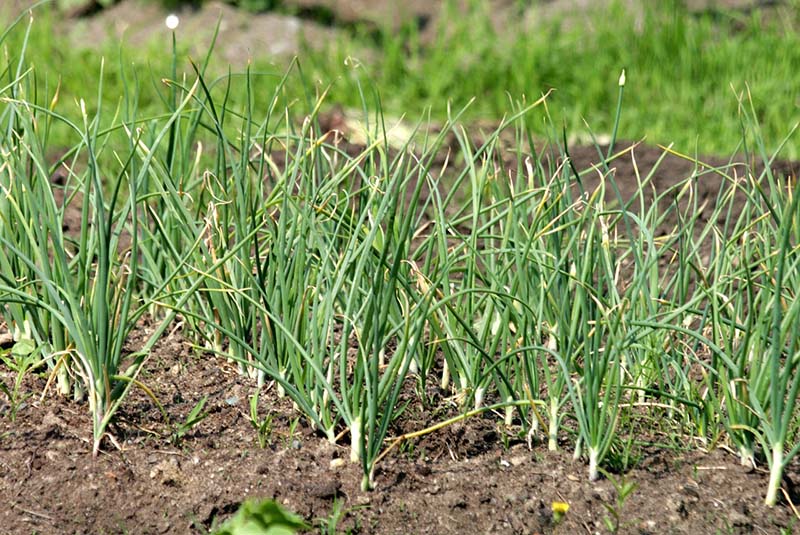
| Soil Type: | Well-drained with excellent moisture retention |
| Soil pH: | Between 6.0 and 7.0 |
| Sun Exposure: | 6–8 hours of sunlight daily |
Garlic and onions have similar qualities. Their strong aroma is what repels insects and pests, such as cabbage worms and slugs, that may attack your cabbages. Garlic also repels rabbits, moles, and other burrowing animals that may disturb the roots of your cabbages. It’s also an excellent companion plant for tomatoes and peppers.
Garlic is easy to grow and takes up little space. Plant it on the edges of your garden and let the cabbages take center stage. This way, insects won’t get into your garden. You can harvest it before the winter season sets in.
7. Scallions

| Soil Type: | Sandy loam |
| Soil pH: | Between 6.0 and 7.0 |
| Sun Exposure: | Between 6–8 hours per day |
These onion-related plants have delicate leaves and white flowers. They bloom in June or July. They are small and lean, thus they don’t take up too much space. They will grow well close to cabbages, keeping aphids away. They release a substance called allelopathy into the soil. This substance repels pests.
They grow slowly and add essential nutrients to the soil. Cabbage needs these nutrients to grow well. The cabbages in return provide shade to scallions. You just need to plant scallions before the cabbages, and you are set.
Legume Companions
8. Peas
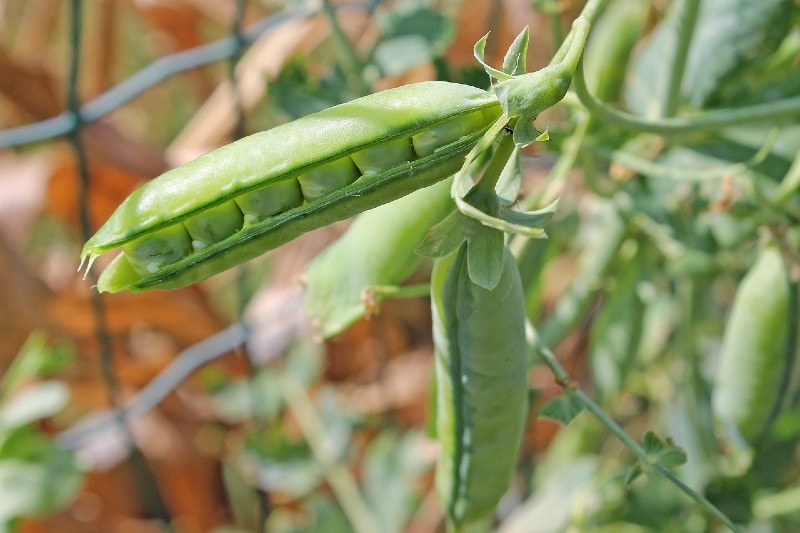
| Soil Type: | Sandy to heavy clay |
| Soil pH: | Between 6.0 and 7.5 |
| Sun Exposure: | 4–5 hours daily |
Peas are an excellent nitrogen-fixer for the soil. They convert atmospheric nitrogen into ammonia-like compounds that cabbage uses. You can plant peas in rows or between cabbages in a garden once the risk of frost has passed.
The peas will grow up the trellis and cover gaps between plants, keeping out pests such as aphids and whiteflies. They also provide shade to cabbages and other veggies you may be growing in your garden. Ensure to space them far enough to give each plant enough room for its roots to spread out.
9. Beans
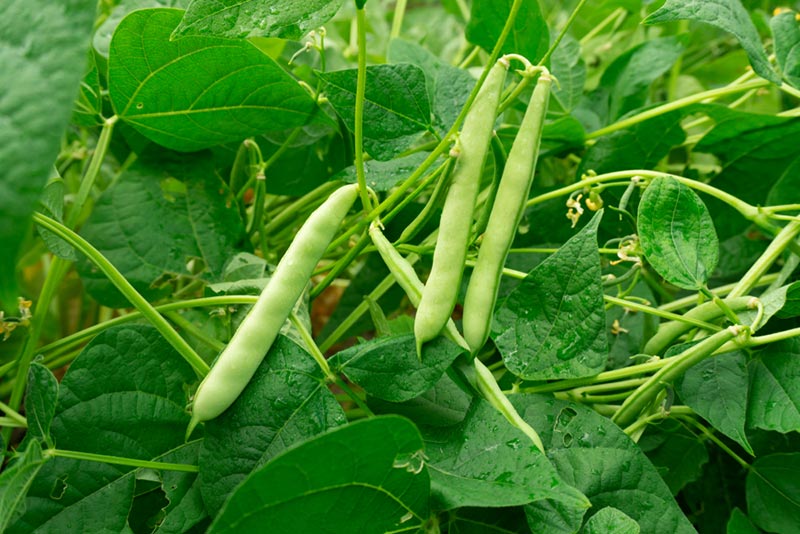
| Soil Type: | Clay or silt loam |
| Soil pH: | Between 6.0 and 7.0 |
| Sun Exposure: | 8–10 hours per day |
Beans fix nitrogen in the soil. They also prevent weeds from growing. You will need to plant them before the cabbages so they can get established before the cabbages start growing high enough to shade them out or compete for nutrients in the soil.
Pole beans are the best variety to grow with cabbages. They provide enough shade for the cabbages. Ensure you plant these pole beans on the side that gets the most afternoon sunlight. This way, your cabbages are well-protected from the hot afternoon sun.
Herb Companions
10. Sage

| Soil Type: | Well-drained, sandy, and loamy |
| Soil pH: | Between 6.0 and 7.0 |
| Sun Exposure: | Medium to full sun |
Sage is one of the most popular companion herbs for cabbage. It emits a strong scent that drives away many insects, including cabbage moths. The smell also has a calming effect on humans.
It also looks appealing when planted next to cabbages. They have light green, dusty leaves, while cabbages have deep blue and purple leaves. These colors blend well together.
The sage’s tall and bushy growth discourages the growth of weeds by shading them from sunlight, so the cabbage planted near the sage will have ample space and nutrients to grow fast. Just ensure there’s enough space for the sage to grow.
11. Thyme
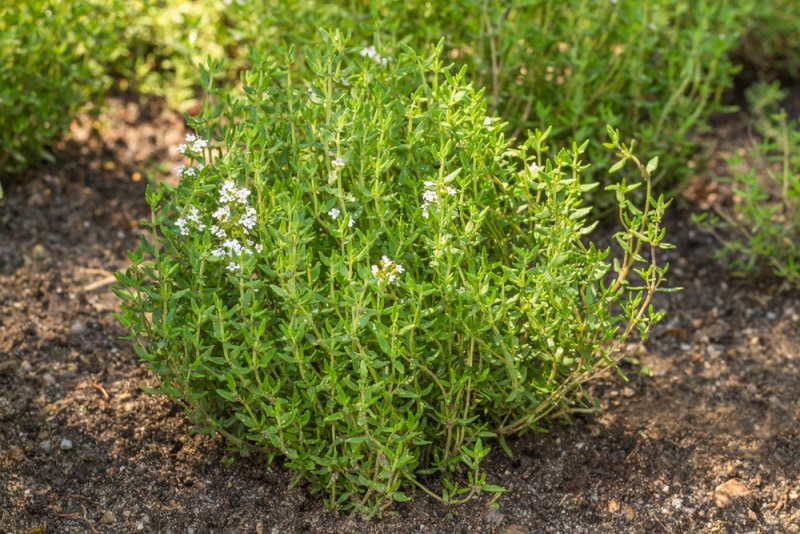
| Soil Type: | Well-drained |
| Soil pH: | 6.0 and 8.0 |
| Sun Exposure: | Full sun |
Thyme is a perennial herb that does well in pots or on the ground. It has a minty aroma that repels cabbage worms, ants, mosquitoes, and moles. The plant also attracts bees and butterflies to your garden.
Thyme has been used for centuries as an aromatic herb in cooking worldwide. It also has many other uses. You can use it as an antiseptic, antispasmodic, antibacterial, anti-inflammatory, and expectorant medicine.
Unfortunately, thyme isn’t always easy to grow from seed. First, plant it in containers or planters. Then, transplant it into your garden. Wait until it gets established in your garden for you to plant cabbages.
12. Basil
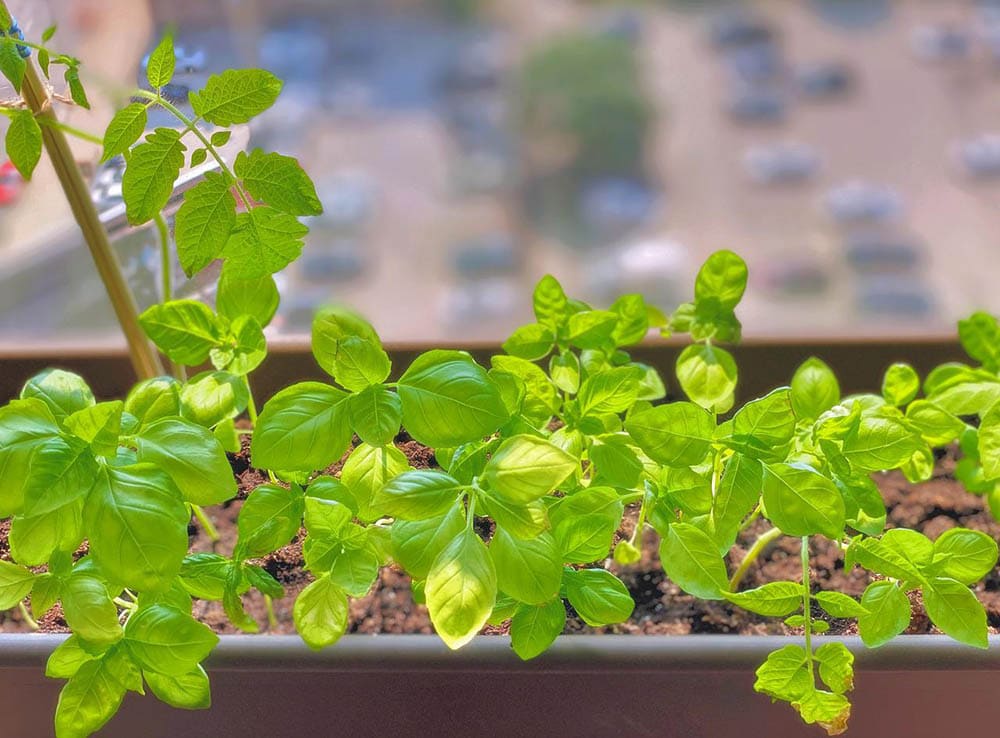
| Soil Type: | Well-drained, rich, and moist |
| Soil pH: | 6.0 to 7.5 |
| Sun Exposure: | 6–8 hours each day |
Basil leaves contain essential oil. It deters harmful insects such as root maggots from your cabbages.
If you’re growing basil and cabbage in the same garden bed, space them apart. This way, they won’t touch each other when they’re fully grown.
Plant basil in early spring after all danger of frost has passed. You can also plant it in late summer for fall and winter harvests.
13. Rosemary
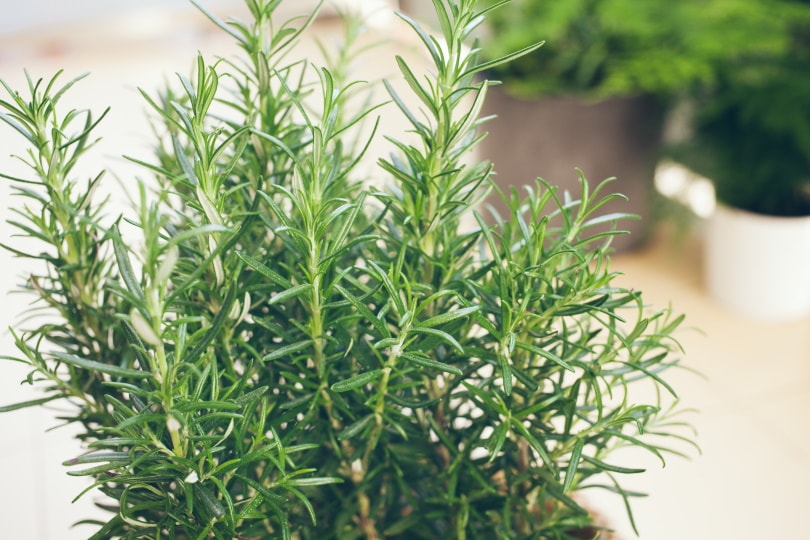
| Soil Type: | Well-drained, slightly acidic, loamy soil |
| Soil pH: | Between 6.0 and 7.0 |
| Sun Exposure: | 6–8 hours of direct sunlight each day |
Rosemary is a hardy, drought-tolerant herb that grows well during the hot and dry summer months. It’s an excellent companion plant for cabbage given its strong menthol smell that deters cabbage pests such as cabbage worms, loopers, and thrips. You can plant it on the edges of your garden.
Flower Companions
14. Calendula
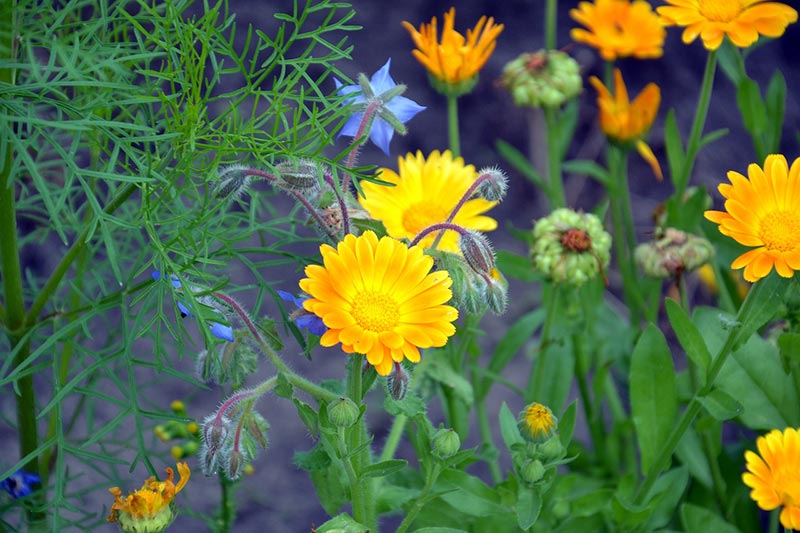
| Soil Type: | Moderately nutrient-rich and well-drained |
| Soil pH: | Between 6.0 and 7.0 |
| Sun Exposure: | Full sun |
Calendula is a member of the daisy family. It has been used as a medicinal plant for centuries. The flowers are sweet and fragrant with a yellow hue. This flower works well with cabbage because its floral aroma repels pests that attack cabbages.
The flowers last several days, attracting pollinators such as hummingbirds and bees. Calendula also contains natural insect repellents like thymol, which is effective against aphids, whiteflies, scales, and mites.
The plant has a long history of use as a traditional remedy. Its flowers have a cooling effect on the human body. If you have sensitive skin, calendula may be just what you’re looking for!
15. Marigold

| Soil Type: | Well-drained and loamy |
| Soil pH: | Between 6.2 and 6.5 |
| Sun Exposure: | Full sun |
Marigold is one of the best floral companions for cabbage. It protects cabbages from root maggots and other pests. On the other hand, it attracts beneficial insects such as ladybugs and praying mantises that destroy harmful pests in your garden.
Marigold has been used for centuries as a companion plant, protecting other plants from insects, and deterring nematodes. These harmful organisms cause stunted growth in plants.
Mature marigolds can also tolerate light frost, thus making an excellent companion plant for cabbages in spring.
Worst Companion Plants for Cabbage
Now that you know the best companion plants for cabbage, it’s crucial to know a few worst companion plants.
- Strawberries: Both strawberries and cabbages need a lot of nitrogen. They compete for the same nutrients, and this leads to stunted growth in your cabbages. Also, cabbages can impair strawberry plants. If you want these two plants to thrive, plant them separately.
- Tomatoes: Both tomatoes and cabbage have fibrous roots. These roots don’t go well together. Tomatoes are affected by cabbages, and you may notice stunted growth. Besides, your cabbages may be prone to hornworms. Tomatoes attract these destructive pests.
- Pumpkins: Pumpkins need a lot more water than cabbages. Growing both cabbages and pumpkins in the same garden bed can be problematic. Besides, pumpkin vines spread far and can wind around your cabbages. They can also block sunlight from getting to the cabbages.
- Corn: Corn is a tall plant that needs lots of space to grow. Cabbage grows short and needs sunlight to grow well. The corn leaves will block the sunlight from reaching the cabbage leaves. They may turn yellow or wilt. Cabbage may also attract pests harmful to corn.
- Potatoes: Potatoes have shallow roots that don’t compete well with deep-rooted cabbages. If you’re growing potatoes near your cabbage patch, keep them separated by at least 10 feet. This way, they won’t compete for nutrients and water.
Conclusion
Overall, there are many benefits to planting companion plants for cabbage. The correct companion will make your cabbages stronger, better, and healthier. We’ve included a list of 15 companion plants known to thrive with this vegetable. This list should get you started on your way to getting a bountiful harvest this season.
Featured Image Credit: Peter Turner Photography, Shutterstock
Contents



